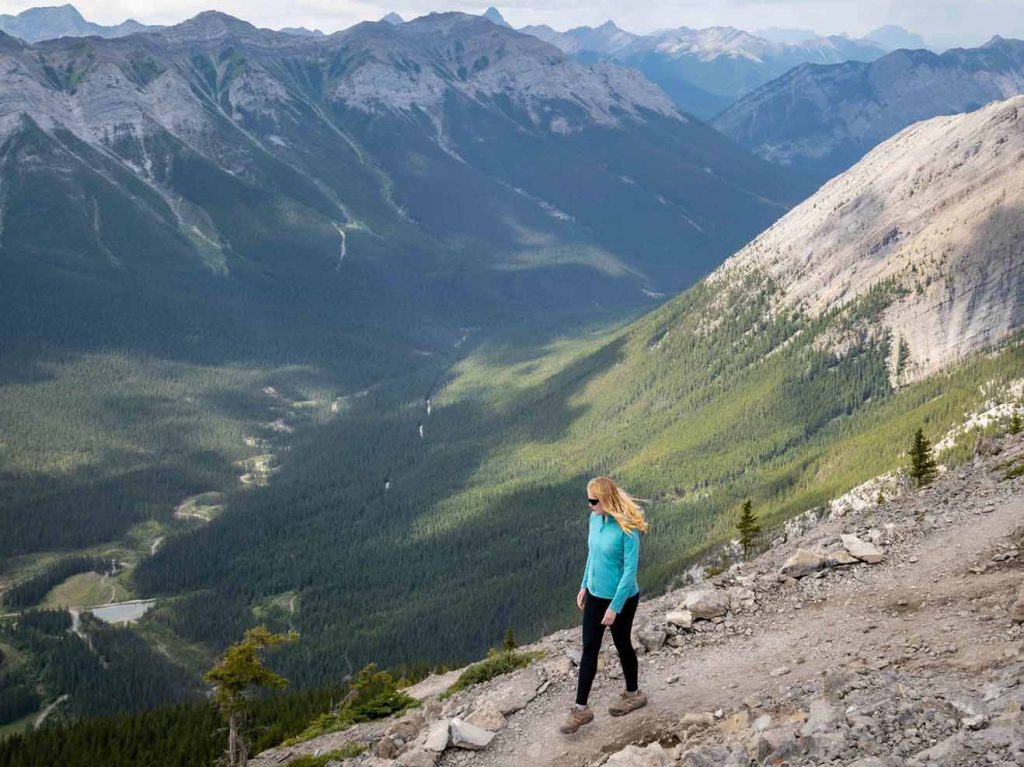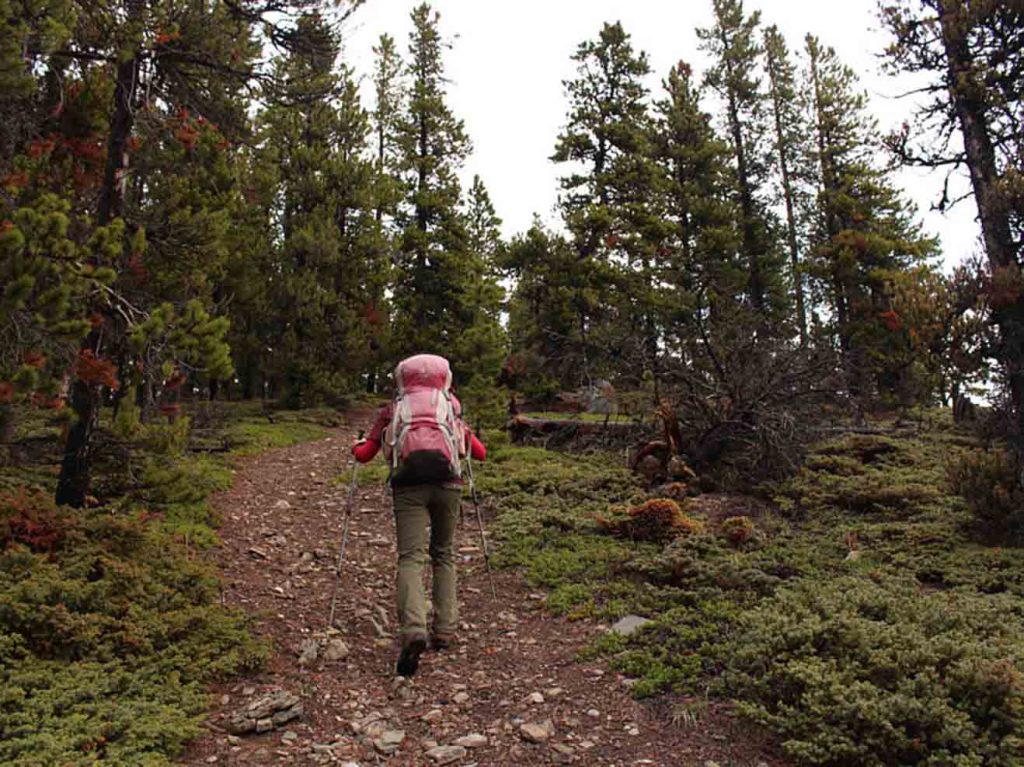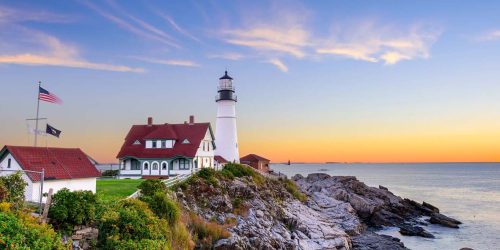A Hiker’s Paradise: The Best Trails Around Calgary
Nestled where the rolling prairies meet the towering front ranges of the Canadian Rockies, Calgary offers a unique and accessible gateway to some of North America’s most breathtaking natural landscapes. While the city itself pulses with Western charm, cultural vibrancy, and urban sophistication, what lies just beyond its perimeter is a vast, untamed wilderness—one that quietly calls out to the steady rhythm of hiking boots.
The moment the city’s skyline fades in the rearview mirror, the terrain transforms into sweeping foothills, dramatic canyons, alpine lakes, and evergreen valleys. It’s in these places that the footpath becomes a story, and each trail unfolds a new chapter in the narrative of the land. The region’s remarkable ecological diversity, geological splendor, and rich heritage create an atmosphere that invites not just walking, but wandering.
This journey has been one of movement and mindfulness, of discovering the terrain through breath and motion. What follows is a guide to some of the finest trails I encountered—each selected for its distinctive features, scenic rewards, and the sense of immersion it offers in the landscape that surrounds Calgary.
1. Prairie Mountain Trail – Bracing Winds and Sweeping Views
Located just 45 minutes west of the city, Prairie Mountain is a local favorite that rewards the ambitious with panoramic views across the Elbow Valley and into the Rocky Mountains. The trailhead begins at the Elbow Falls parking area and ascends sharply through a coniferous forest.
The initial stretch can feel abrupt, with a steep incline that tests stamina. Fallen logs and exposed roots shape a rugged pathway. The climb, however, is rhythmic, and as elevation increases, the forest canopy begins to open, offering glimpses of distant ridgelines and the silvery shimmer of the Elbow River below.
Near the summit, the wind gathers with intensity. Here, the trees recede entirely, giving way to an open shoulder of mountain. The view stretches all the way to the city on a clear day, and to the west, the rugged front ranges rise like a jagged wall. The summit is marked by a flagpole, where hikers often pause, not just to rest, but to witness the wild vastness that surrounds them.
2. Grassi Lakes – A Gem of Turquoise and Limestone
In Canmore, an hour’s drive from Calgary, the Grassi Lakes Trail combines accessibility with alpine beauty. The trail offers two routes: an easier service road, and a more challenging, scenic path that climbs alongside a waterfall and limestone cliffs.
Opting for the scenic path, the trail meanders upward through a dense pine forest before veering toward the cliffside. Water cascades down beside moss-covered rock, and natural stone steps add a touch of artistry to the climb. Throughout the ascent, the forest is punctuated by openings that reveal glimpses of Canmore below and the vast Bow Valley stretching beyond.
The lakes themselves are the highlight—two brilliant pools of turquoise, framed by towering rock walls. Their color, a product of mineral-rich waters and glacial origin, is almost surreal. Climbers can often be seen on the cliffs above, while the reflections in the water mirror the pine trees with glasslike clarity. The area also offers interpretive signs with insights into the history and geology of the lakes, enriching the sense of place.
3. Ha Ling Peak – Steep Ascent, Sublime Reward
Also beginning in Canmore, the Ha Ling Peak trail is a popular yet challenging hike, ascending nearly 800 meters in just over 3 kilometers. It is not a trail for the faint-hearted, but its steep switchbacks and rocky final push are matched by the grandeur awaiting at the summit.
The trail has undergone recent upgrades, with well-built steps and defined paths minimizing erosion. As elevation increases, the air grows thinner and cooler. The final segment traverses a scree slope—a loose, rocky incline that demands careful footing. Yet each step upward opens a wider view, until the summit arrives with sudden drama.
From the top, a full sweep of the Bow Valley opens up. Below lies Canmore, its buildings softened by altitude and distance, while to the west, endless ridgelines stack into the horizon. The sense of elevation here is humbling. Jagged peaks surround on all sides, and the vastness of Alberta’s mountainous backbone becomes a visceral presence.

4. Johnston Canyon and the Ink Pots – Water, Stone, and Solitude
West of Calgary and just past Banff, the Johnston Canyon trail is one of the most visually diverse hikes in the area. The trail begins with elevated catwalks suspended over a narrow gorge carved by centuries of rushing water. The Lower Falls arrive quickly, crashing into a deep pool surrounded by smooth limestone walls.
Continuing on, the Upper Falls thunder down a cliff face, visible through a veil of mist and sunlight. The trail is well-maintained, making it suitable for nearly all fitness levels, though the further journey to the Ink Pots adds a layer of remoteness and calm.
This final segment moves into open meadows and soft forest paths. The Ink Pots are mineral springs—vivid blue-green pools that bubble gently from underground aquifers. Surrounded by meadow grass and the occasional deer, the area offers a complete contrast to the bustling canyon trail. Here, the mountains hold still, and the silence feels deeply restorative.
5. Yamnuska (Mount John Laurie) – Edge of the Rockies
Approaching from Highway 1A, Yamnuska rises sharply from the plains—its sheer cliffs forming a dramatic gateway to the Rockies. The trail around and up this mountain is varied, beginning in forest, traversing ridgelines, and culminating in a steep scramble over rock.
This hike includes a traverse along a narrow ledge known as the “Yamnuska Traverse,” with drop-offs that inspire both awe and respect. Steel cables have been anchored into the rock to provide a sense of security during the most exposed sections.
The summit itself offers a startling view. To the east, the flat plains stretch to the horizon; to the west, the first folds of the Rockies tumble one over another. It’s a place where geology becomes story—where the abrupt meeting of two worlds can be touched, stood upon, and contemplated.
6. Rawson Lake and Sarrail Ridge – Alpine Meadows and Mountain Lakes
Beginning at Upper Kananaskis Lake, the Rawson Lake trail is a moderate climb through thick pine forest, eventually opening to a serene, green-fringed lake cupped beneath Sarrail Ridge. The lake reflects the surrounding peaks with mirrorlike clarity.
The journey doesn’t end here. The push up to Sarrail Ridge is steep, transitioning from forest into a high alpine meadow. Wildflowers line the path during summer, and marmots can sometimes be heard chirping from their rocky homes.
From the top of the ridge, the view is staggering. Rawson Lake now lies far below, and to the west, the entirety of Upper and Lower Kananaskis Lakes unfolds. Cloud shadows drift across the water, and distant peaks stand in silent symmetry. The climb is demanding, but the scope of beauty makes every exertion meaningful.
7. Ptarmigan Cirque – A Glimpse into the Alpine
Located at Highwood Pass—the highest paved road in Canada—Ptarmigan Cirque is an accessible alpine hike that delivers on grandeur. The trail loops gently through subalpine forest before entering a bowl-shaped valley carved by glaciers.
Surrounded on all sides by rocky peaks, the cirque is filled with wildflowers in late summer. Streams run clear through the meadows, and the wind carries the coolness of snowfields that linger even in July.
Interpretive signs along the path detail the region’s geology, flora, and fauna. The alpine environment here is fragile and rare, and walking through it evokes a sense of reverence. Peaks such as Mount Rae tower nearby, creating a skyline that feels both ancient and unyielding.
8. Larch Valley and Sentinel Pass – Autumn’s Golden Crown
Timing is essential for the Larch Valley hike. For a few weeks in late September, the subalpine larch trees turn a deep gold, transforming the valley into a cathedral of color. The trail begins at Moraine Lake, one of the most iconic locations in the Rockies, and quickly ascends into higher terrain.
The climb leads through dense forest until the trees open to reveal a bowl-shaped valley cradled beneath the Ten Peaks. Here, golden larches stand like sentinels, their needles glowing in the autumn sun. The air is crisp, the path soft with fallen needles.
Continuing on, the route climbs to Sentinel Pass, flanked by towering cliffs and culminating in a viewpoint that feels like standing at the edge of a new world. Below, the valley floor lies quilted in shadow and light; above, the peaks remain dusted in early snow.
9. East End of Rundle (EEOR) – A Bold Climb
The East End of Rundle, often referred to as EEOR, offers a steep, adventurous trail with incredible views over Canmore and Ha Ling Peak. The path begins almost unmarked, climbing quickly into loose scree and uneven ground.
This hike demands care and attention. The path often disappears among rocks, and the footing can be unstable. But as height is gained, the views grow vast. Spray Lakes glisten below, and the city of Canmore appears framed between ridges.
The summit is a jagged ridgeline, where hikers sit and gaze westward, their boots dangling over a sheer drop. The sense of elevation is raw and immediate. Every direction reveals deep valleys and distant summits, reminders of the scale and power of the land.
10. Fullerton Loop – Gentle Elevation, Forested Solace

Closer to Calgary, the Fullerton Loop in Bragg Creek offers a gentler hike through mixed forest and grassy hills. This is a perfect trail for quieter days, when solitude and reflection are the primary goals.
The path rises gradually, passing through aspen groves and pine stands. The sound of wind through leaves and the soft crunch of gravel underfoot create a meditative rhythm. There are few dramatic vistas here, but the stillness, the filtered sunlight, and the scent of pine carry their own kind of majesty.
Along certain ridgelines, there are openings in the trees that reveal the valley below and the rolling foothills beyond. These views are understated, but enduring. The hike circles back gently, completing a loop that feels more like a conversation with the land than a conquest of it.
11. Troll Falls and the Upper Falls Trail – Water and Whispering Pines
Tucked within Kananaskis Country, the Troll Falls trail is a family-friendly route that evolves into a more adventurous trek when continuing beyond the main waterfall. The initial trail is well-maintained and lined with spruce and fir, creating a corridor of filtered light and calm. The trail follows a gentle path along a creek bed, culminating at the namesake waterfall.
Troll Falls is modest in size but charming, with water tumbling over a rounded rock face into a shallow basin. The real journey begins beyond this point. A signed extension leads hikers up a steeper path toward the upper falls, where the terrain becomes wilder and the crowds thin out considerably.
Here, moss grows thick on the boulders, and the falls are higher, more dramatic. The water fans out over multiple rock shelves, creating a fine mist in the air. Trees overhang the cliffs, their roots entwined with the rock. It’s a place that feels quietly enchanted, untouched by time.
12. Bow Glacier Falls – Tracing Glacial Memory
A journey north along the Icefields Parkway brings you to the shores of Bow Lake, where the trail to Bow Glacier Falls begins. The path winds along the lake’s shore, with the glacial-fed water shifting in shades of turquoise and steel blue depending on the light.
Crossing gravel flats and moraine fields, the trail eventually ascends into a narrow canyon, carved by ancient ice and water. The walls on either side rise steeply, directing attention to the falls ahead—cascading from the glacier that once filled this valley completely.
Standing before the falls, the roar is thunderous, but steady. Meltwater spills from the tongue of the glacier above, carrying with it the icy memory of an ancient world. The air is colder here, and the scale of the cliffs makes each person feel like a mere note in a larger, glacial symphony.
13. Lake Louise to the Plain of Six Glaciers – Grandeur and Glacier
Starting from the turquoise mirror of Lake Louise, this trail follows the lake’s shoreline before climbing into the surrounding wilderness. The sound of paddles on water fades, replaced by the rustle of alpine trees and the distant crack of shifting ice.
The route steadily gains elevation, winding through forest and beneath overhanging cliffs. At the historic Plain of Six Glaciers Teahouse, nestled in a clearing, the trail opens to a view of several active glaciers clinging to the surrounding peaks.
Continuing beyond the teahouse, the path narrows and climbs further into rock and moraine. Glaciers stretch out like frozen rivers, and the mountains echo with the rumble of distant avalanches. The sheer magnitude of these formations, shaped over millennia, creates a reverent silence among hikers.
14. Grotto Canyon – Ancient Art and Echoes
Near Exshaw, just east of Canmore, the Grotto Canyon trail is an experience that combines natural beauty with hidden cultural treasures. The path follows a dry creek bed into a narrowing canyon whose walls rise sharply on both sides.
During summer, the trail is rocky and uneven. In winter, it transforms into an ice walk, with frozen waterfalls and icy floors. Midway through the canyon, faint pictographs can be found on the canyon wall—red ochre images left centuries ago by the Stoney Nakoda people.
The end of the trail features a waterfall that, depending on the season, crashes or glimmers in frozen form. The canyon walls amplify every sound—the flap of wings, the echo of footsteps, the murmur of a distant voice—creating an intimacy with the space that feels ancient and profound.
15. Sulphur Mountain Boardwalk – Height and History
Accessible via the Banff Gondola or a strenuous hike up the Sulphur Mountain Trail, the summit features a well-maintained boardwalk that leads to Sanson’s Peak and a historic meteorological station. Though this is not a traditional hike in the wildest sense, it still offers exceptional elevation and perspective.
The boardwalk stretches across the ridgeline, with railings to guide visitors and interpretive signs to contextualize the geography and history. The views sweep across the Bow Valley, Banff townsite, and the surrounding peaks.
Even with its popularity and accessibility, the boardwalk provides a striking reminder of human curiosity and connection to the sky. On days when clouds drift through the valley, walking this high feels like moving through a dream suspended between earth and atmosphere.
16. Final Thoughts Embedded in the Trail
Each of these trails offers more than scenery. They offer immersion—into geology, ecology, weather, and memory. They form a web of paths that, while mapped on paper, only truly exist in the breath, effort, and attention given while walking them. Whether winding through golden larches, scrambling across high ridges, or tracing the edge of ancient glaciers, the experience becomes part of the land, and the land part of the experience.
In the spaces between footsteps and in the moments between summits, the landscape teaches its own lessons—about beauty that does not beg for attention, about vastness that offers perspective rather than intimidation, and about silence that holds more than sound ever could.





